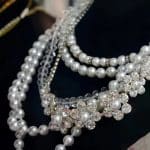Turquoise has long been prized for its vibrant blue-green hues and unique beauty, making it a popular choice for jewelry making turquoise beads. Its rich history spans across various cultures, where it was revered for its healing properties and mystical significance. In the world of jewelry crafting, turquoise beads are a versatile component that can elevate any design, from classic to contemporary pieces.
Whether you prefer natural or synthetic turquoise beads, each type offers distinct characteristics that can enhance your creations. Understanding the differences between them is crucial when selecting the right materials for your projects. In addition to the beads themselves, having the proper tools and materials on hand is essential for successful jewelry making with turquoise.
From necklaces to earrings and bracelets, turquoise beads can be incorporated into a variety of designs to add a pop of color and elegance. With a step-by-step guide and helpful tips, you can confidently create stunning turquoise bead jewelry pieces that reflect your personal style. Additionally, exploring different techniques and care instructions will ensure that your creations stand the test of time while maintaining their beauty.
Types of Turquoise Beads
Turquoise beads are a popular choice for jewelry making due to their vibrant colors and unique look. When it comes to turquoise beads, there are two main types to consider: natural and synthetic. Natural turquoise beads are prized for their authenticity and natural beauty. They come in a wide range of shades, from pale blue to deep green, with distinctive matrix patterns that make each bead one-of-a-kind.
On the other hand, synthetic turquoise beads are created in a laboratory using a combination of natural minerals and synthetic materials. While synthetic turquoise beads may not have the same value as natural ones, they offer consistency in color and shape. Additionally, synthetic turquoise beads are often more affordable, making them a great option for beginners or those on a budget.
When selecting turquoise beads for your jewelry making project, consider the type that best fits your aesthetic preferences and budget. Whether you choose natural or synthetic turquoise beads, both options can result in stunning pieces of jewelry that will definitely make a statement. No matter your choice, working with turquoise beads can add a touch of Southwestern charm or bohemian flair to your creations.
Tools and Materials Needed for Jewelry Making With Turquoise Beads
When it comes to creating beautiful jewelry with turquoise beads, having the right tools and materials is essential. Whether you are a beginner or an experienced jewelry maker, ensuring you have the necessary supplies will make the process smoother and more enjoyable. Here is a list of tools and materials needed for jewelry making with turquoise beads:
- Turquoise Beads: The star of the show. Make sure you have a variety of sizes, shapes, and shades to add dimension to your pieces.
- Jewelry Wire or Cord: Depending on your design, consider using different types such as beading wire, nylon cord, or stretch cord.
- Clasps and Findings: Ensure you have a selection of clasps, jump rings, crimp beads, and other findings to complete your jewelry pieces.
- Pliers: Round-nose pliers, chain-nose pliers, and wire cutters are essential for bending wires, opening jump rings, and cutting cords.
- Beading Mat: A beading mat will help prevent beads from rolling away while you work on your creation.
In addition to these basic tools and materials, you may also want to consider adding embellishments like charms, spacer beads, or gemstone chips to enhance your turquoise bead designs. Having a well-organized workspace with good lighting can also make the jewelry-making process more enjoyable and efficient.
Remember that practice makes perfect when it comes to working with turquoise beads in jewelry making. Don’t be afraid to experiment with different techniques and styles to create unique and stunning pieces that reflect your personal taste and creativity. With the right tools and materials at hand, the possibilities are endless for crafting beautiful turquoise bead jewelry.
Now that you know what tools and materials are needed for creating jewelry with turquoise beads, let’s move on to the next section where we will provide a step-by-step guide to creating a gorgeous turquoise bead necklace.
Step by Step Guide to Creating a Turquoise Bead Necklace
When it comes to creating a beautiful turquoise bead necklace, the possibilities are endless. Whether you are a beginner or an experienced jewelry maker, this step-by-step guide will help you navigate through the process with ease. Turquoise beads are versatile and can be used in various designs, making them a popular choice among jewelry enthusiasts.
Selecting Your Turquoise Beads
The first step in creating a turquoise bead necklace is choosing the beads that will form the centerpiece of your design. When selecting turquoise beads, consider factors such as size, shape, and color. Natural turquoise beads come in a range of hues from sky blue to greenish-blue, while synthetic turquoise beads offer more consistency in color. Choose beads that appeal to your aesthetic preferences and suit the design you have in mind.
Gathering Your Materials
In addition to turquoise beads, you will need other materials to complete your necklace project. These may include beading wire or thread, crimps, clasps, and tools such as pliers and wire cutters. Make sure you have all necessary supplies on hand before starting your project to avoid interruptions during the creative process.
Assembling Your Necklace
Once you have selected your turquoise beads and gathered your materials, it’s time to start assembling your necklace. Begin by laying out your chosen beads in the order you want them to appear on the necklace. String the beads onto the beading wire or thread according to your desired pattern.
Use crimps to secure the ends of the wire or thread, then attach a clasp for closure. Once all components are connected securely, your stunning turquoise bead necklace is ready to wear or gift to someone special.
This step-by-step guide provides a foundation for creating an exquisite turquoise bead necklace that reflects your personal style and creativity. Experiment with different bead sizes and patterns to customize your design further. With practice and patience, you can master the art of jewelry making with turquoise beads and create unique pieces that make a statement wherever you go.
Tips for Incorporating Turquoise Beads Into Earrings and Bracelets
Turquoise beads are a stunning addition to any jewelry piece, adding a pop of color and an elegant touch. When it comes to incorporating turquoise beads into earrings and bracelets, there are various creative ways to make your pieces stand out. One popular method is to use turquoise beads as the focal point of the design.
For earrings, you can create dainty drop earrings with a single turquoise bead hanging from each earring hook. This simple yet eye-catching style highlights the beauty of the turquoise bead.
Incorporating turquoise beads into bracelets allows for more versatility in design. You can create a beaded bracelet using only turquoise beads for a bold look, or mix them with other types of beads for a more eclectic style. Another interesting way to incorporate turquoise beads into bracelets is by using them as charms or accent beads along with metal spacers or crystal beads. This adds dimension and texture to the bracelet while showcasing the lovely hue of the turquoise beads.
When designing earrings and bracelets with turquoise beads, it’s important to consider the overall aesthetic you want to achieve. Turquoise pairs beautifully with silver and gold accents, so combining these metals with turquoise beads can elevate the elegance of your jewelry pieces. Whether you prefer dainty and delicate designs or bold statement pieces, turquoise beads offer endless possibilities for creating unique earrings and bracelets that reflect your personal style.
| Benefits | Tips |
|---|---|
| Colorful addition | Use turquoise as focal point |
| Versatile designs | Mix with other types of beads |
| Elegant touch | Consider metal accents like silver or gold |
Caring for Turquoise Jewelry
Turquoise beads have been cherished for centuries for their stunning beauty and rich history. However, caring for turquoise jewelry is essential to ensure its longevity and preserve its vibrant color. Whether you are a seasoned jewelry maker or a newbie looking to create exquisite pieces with turquoise beads, it is crucial to follow the dos and don’ts of caring for your precious creations.
Dos
First and foremost, store your turquoise bead jewelry in a soft pouch or a separate compartment to prevent scratching or tangling with other pieces. Turquoise is a relatively soft stone, so it is essential to handle it with care to avoid any damage. Additionally, avoid exposing your turquoise beads to harsh chemicals such as household cleaners or perfumes, as they can tarnish the metal components and affect the integrity of the beads.
To keep your turquoise jewelry looking its best, clean them regularly using a soft cloth dampened with lukewarm water. Avoid using harsh cleaners or abrasive materials that can scratch the surface of the beads. When not wearing your turquoise jewelry, limit its exposure to direct sunlight as prolonged UV exposure can fade the color of the beads over time.
Don’ts
One crucial don’t when it comes to caring for turquoise jewelry is avoiding contact with oils and lotion. These substances can discolor the beads and leave residues that are challenging to remove without damaging the stones. Furthermore, never use ultrasonic cleaners or steamers on your turquoise bead jewelry as they can cause cracking or breakage in the stones due to their porous nature.
Another important don’t is exposing your turquoise jewelry to extreme temperatures. Sudden temperature changes can cause thermal shock, leading to cracks or fractures in the beads. Therefore, it is best to remove your turquoise jewelry before engaging in activities such as swimming or exercising where exposure to sweat or heat may occur. By following these dos and don’ts, you can ensure that your turquoise bead jewelry remains beautiful and vibrant for years to come.
Exploring Different Jewelry Making Techniques With Turquoise Beads
When it comes to jewelry making, turquoise beads offer a unique and vibrant touch to any piece. From necklaces to bracelets and earrings, there are endless possibilities for incorporating these stunning beads into your designs.
One popular technique for working with turquoise beads is stringing, where the beads are simply threaded onto a wire or string to create beautiful necklaces or bracelets. This method allows for creativity in mixing different shapes and sizes of turquoise beads to achieve a desired look.
Another technique that can be used with turquoise beads is wire wrapping. This involves using thin wire to secure the beads in place and create intricate designs. Wire wrapping can add a more delicate and intricate touch to your jewelry pieces, making them stand out even more. Additionally, you can also try bead weaving techniques with turquoise beads, such as creating patterns or designs using seed beads alongside the turquoise ones.
For those looking to take their jewelry making skills up a notch, soldering can be an advanced technique to explore when working with turquoise beads. Soldering allows you to connect metal components together to create unique settings for your beads.
This technique requires precision and practice but can result in truly one-of-a-kind pieces of jewelry. Whether you’re a beginner or an experienced jewelry maker, experimenting with different techniques when working with turquoise beads can expand your creative horizons and lead to stunning results.
Inspiration Gallery
Turquoise beads are not just beautiful gemstones, but they also hold a rich history and cultural significance. When incorporating turquoise beads into jewelry making, the possibilities are endless in terms of design and style. One popular way to showcase the beauty of turquoise beads is by creating stunning jewelry designs that highlight the natural allure of this gemstone.
One way to create striking turquoise beaded jewelry is by using a combination of different bead sizes and shapes. Mixing small round turquoise beads with larger oval or nugget-shaped beads can add texture and dimension to your designs. Additionally, incorporating other complementary gemstones like lapis lazuli or coral can enhance the overall look of the piece.
Another design technique for turquoise beaded jewelry is to create intricate patterns or motifs using a variety of bead weaving techniques. From peyote stitch to right-angle weave, the possibilities for creating unique designs with turquoise beads are endless. You can experiment with geometric patterns, floral motifs, or abstract designs to showcase the versatility of turquoise in jewelry making.
When designing turquoise beaded jewelry, it’s important to consider the overall aesthetic you want to achieve. Whether you prefer a minimalist and modern look or a more bohemian and eclectic style, turquoise beads can adapt to any design sensibility. By exploring different techniques and design ideas, you can create stunning turquoise beaded jewelry pieces that truly stand out.
| Design Technique | Description |
|---|---|
| Combining Bead Sizes | Mixing small round turquoise beads with larger shapes for texture. |
| Bead Weaving Patterns | Experimenting with different weaving techniques for unique designs. |
| Aesthetic Considerations | Adapting turquoise bead designs to match preferred styles. |
Where to Source Quality Turquoise Beads for Your Projects
When it comes to sourcing quality turquoise beads for your jewelry making projects, it is essential to consider several factors. One of the best places to find authentic and high-quality turquoise beads is through reputable suppliers and online stores that specialize in gemstones and beads. Look for sellers who provide detailed information about the origin, quality, and treatment of their turquoise beads to ensure you are getting genuine products.
Another option for acquiring turquoise beads for your projects is by visiting gem and mineral shows where you can handpick beads according to your preferences. These events often offer a wide range of turquoise varieties, shapes, sizes, and colors for you to choose from. Additionally, exploring local bead shops or artisan markets can also lead you to discover unique turquoise beads sourced directly from artisans or small-scale suppliers.
In conclusion, finding quality turquoise beads for your jewelry making endeavors requires careful consideration and research. Whether you opt for online suppliers, gem shows, or local markets, make sure to verify the authenticity and quality of the beads before making a purchase.
By investing in genuine turquoise beads sourced responsibly, you can create stunning and meaningful pieces of jewelry that reflect the beauty and history of this captivating gemstone. Let your imagination soar as you explore the endless possibilities of crafting with turquoise beads in your designs.
Frequently Asked Questions
Who Should Not Wear Turquoise Stone?
People who should not wear turquoise stones include those with skin sensitivities or allergies to certain metals in the jewelry settings. Pregnant women should also be cautious, as some believe it can adversely affect them.
How Can You Tell if a Turquoise Bead Is Real?
To determine if a turquoise bead is real, several methods can be used. One common method is the scratch test – real turquoise will not be easily scratched by sharp objects. Additionally, genuine turquoise tends to have a smooth texture and weightier feel compared to fake versions.
What Are Turquoise Beads Good For?
Turquoise beads are believed to possess various metaphysical properties and healing powers. They are said to provide protection, promote inner calmness, enhance communication skills, and even attract good fortune. Some people wear them as a form of spiritual protection or simply for their aesthetic appeal.

Welcome to my jewelry blog! My name is Sarah and I am the owner of this blog.
I love making jewelry and sharing my creations with others.
So whether you’re someone who loves wearing jewelry yourself or simply enjoys learning about it, be sure to check out my blog for insightful posts on everything related to this exciting topic!





